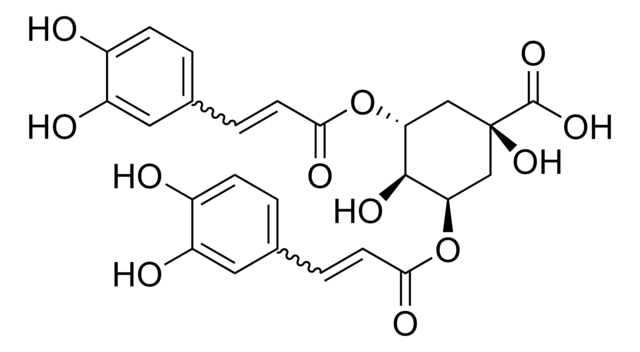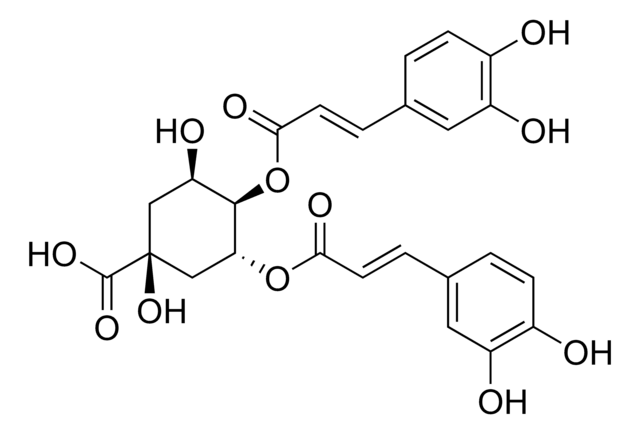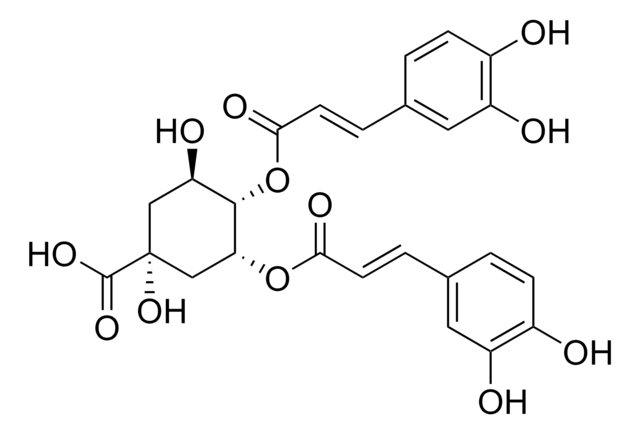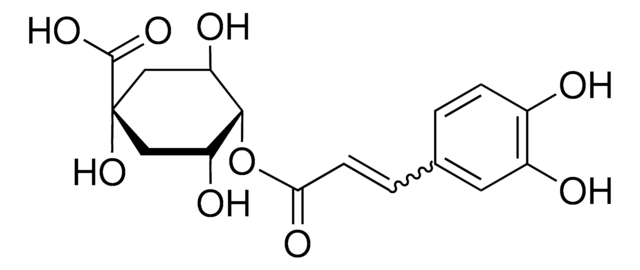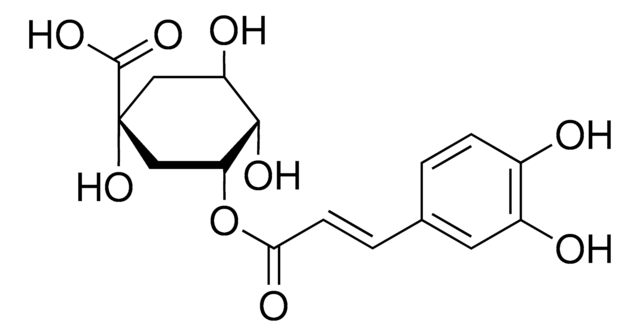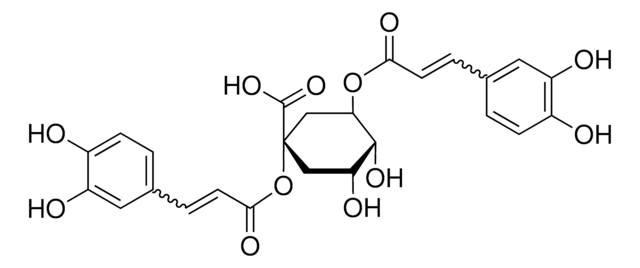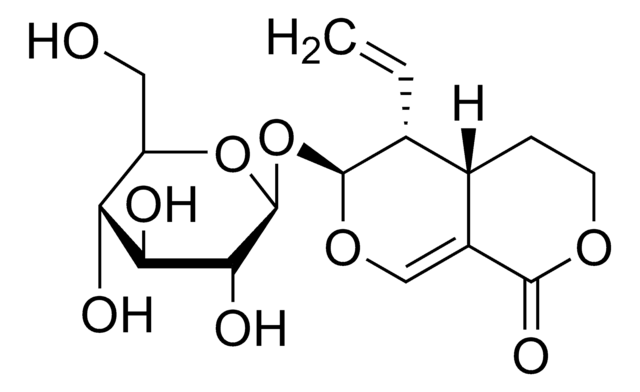SMB00224
3,4-Di-O-caffeoylquinic acid
≥90% (LC/MS-ELSD)
Sinonimo/i:
3,4-DICQA, 3,4-Di-O-caffeoylquinate, 3,4-Dicaffeoylquinic acid, Isochlorogenate B, Isochlorogenic acid B
About This Item
Prodotti consigliati
Livello qualitativo
Saggio
≥90% (LC/MS-ELSD)
Stato
solid
applicazioni
metabolomics
vitamins, nutraceuticals, and natural products
Temperatura di conservazione
−20°C
Stringa SMILE
O[C@@H]1C[C@](O)(C[C@@H](OC(=O)\C=C\c2ccc(O)c(O)c2)[C@@H]1OC(=O)\C=C\c3ccc(O)c(O)c3)C(O)=O
InChI
1S/C25H24O12/c26-15-5-1-13(9-17(15)28)3-7-21(31)36-20-12-25(35,24(33)34)11-19(30)23(20)37-22(32)8-4-14-2-6-16(27)18(29)10-14/h1-10,19-20,23,26-30,35H,11-12H2,(H,33,34)/b7-3+,8-4+/t19-,20-,23-,25+/m1/s1
UFCLZKMFXSILNL-PSEXTPKNSA-N
Cerchi prodotti simili? Visita Guida al confronto tra prodotti
Categorie correlate
Descrizione generale
Applicazioni
- to quantify the caffeoylquinic acids of Artemisia frigida Willd. (Fringed sagewort) using high-performance liquid chromatography with diode array detection and electrospray ionization triple quadrupole mass spectrometric detection (HPLC-DAD-ESI-QQQ-MS)
- to quantify the phenolic compounds of Artemisia species using high-performance liquid chromatography with diode array detection (HPLC-DAD) technique
- for metabolic profiling of methanolic leaf extract of A. nallamalayana and to identify the phenolic acids using High-Performance Liquid Chromatography-Ultraviolet (HPLC-UV) analysis
Azioni biochim/fisiol
Codice della classe di stoccaggio
11 - Combustible Solids
Classe di pericolosità dell'acqua (WGK)
WGK 3
Punto d’infiammabilità (°F)
Not applicable
Punto d’infiammabilità (°C)
Not applicable
Scegli una delle versioni più recenti:
Certificati d'analisi (COA)
Non trovi la versione di tuo interesse?
Se hai bisogno di una versione specifica, puoi cercare il certificato tramite il numero di lotto.
Possiedi già questo prodotto?
I documenti relativi ai prodotti acquistati recentemente sono disponibili nell’Archivio dei documenti.
I clienti hanno visto anche
Global Trade Item Number
| SKU | GTIN |
|---|---|
| SMB00224-1MG | 4061837076282 |
Il team dei nostri ricercatori vanta grande esperienza in tutte le aree della ricerca quali Life Science, scienza dei materiali, sintesi chimica, cromatografia, discipline analitiche, ecc..
Contatta l'Assistenza Tecnica.